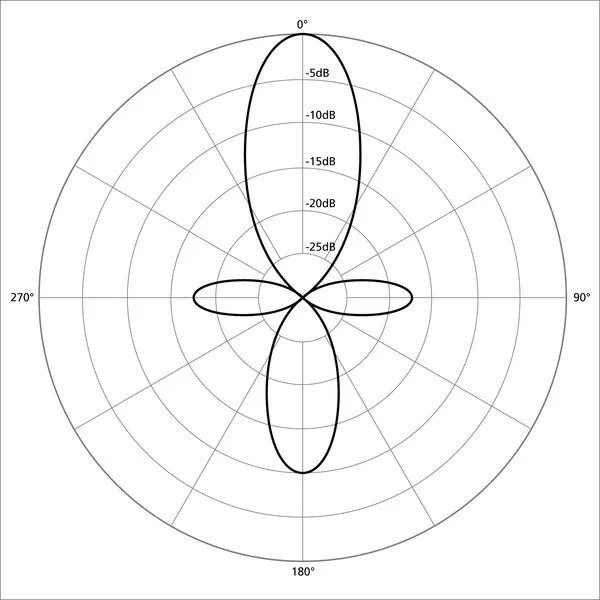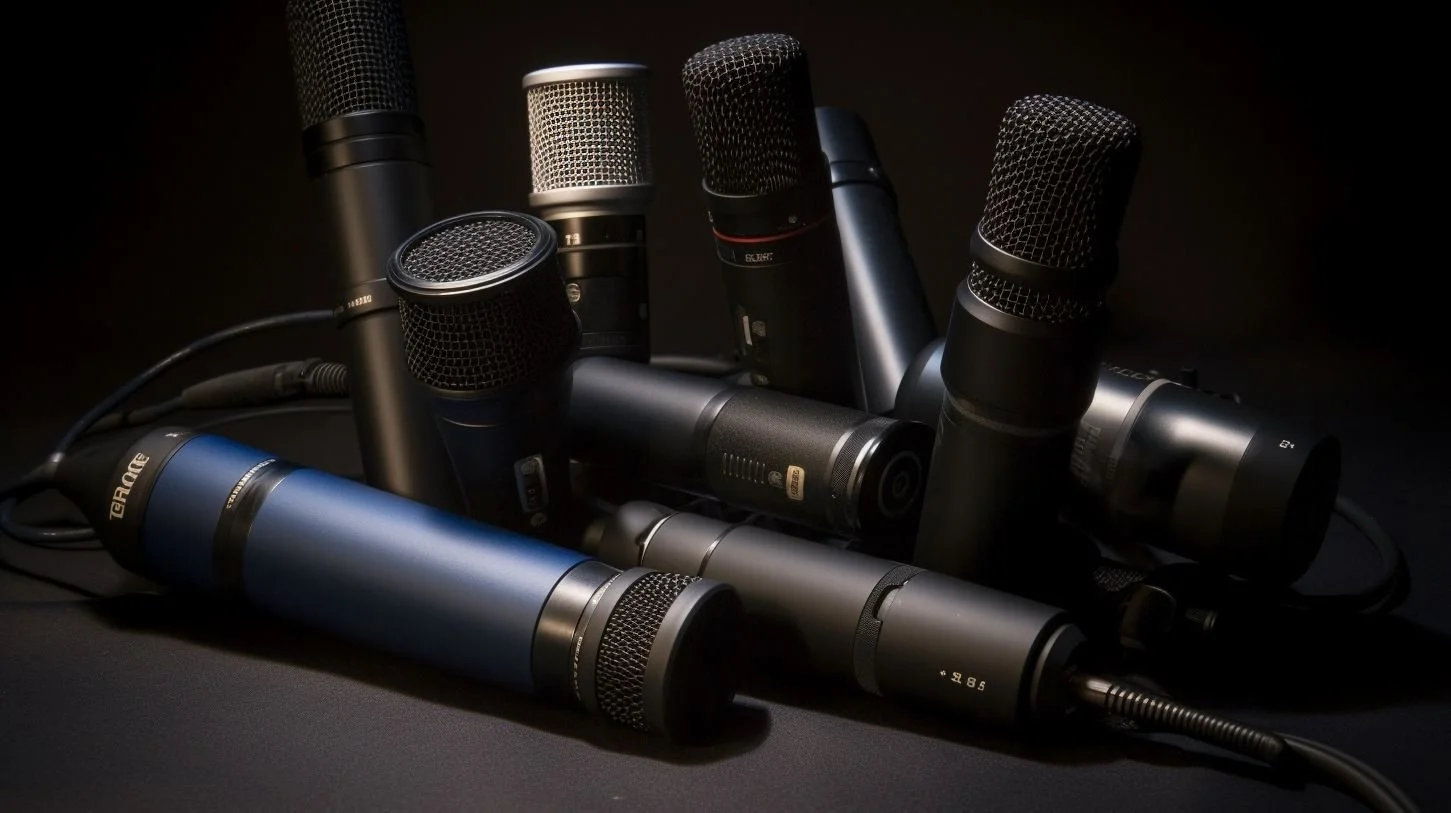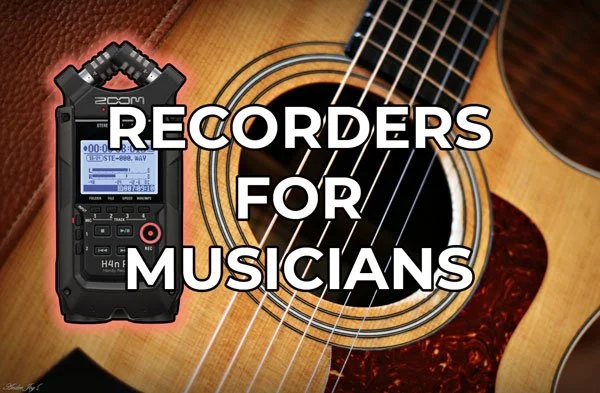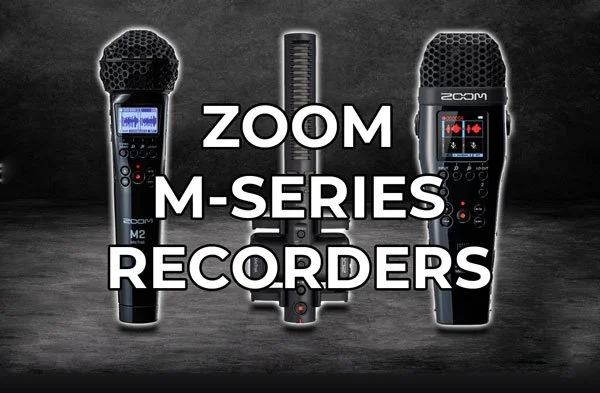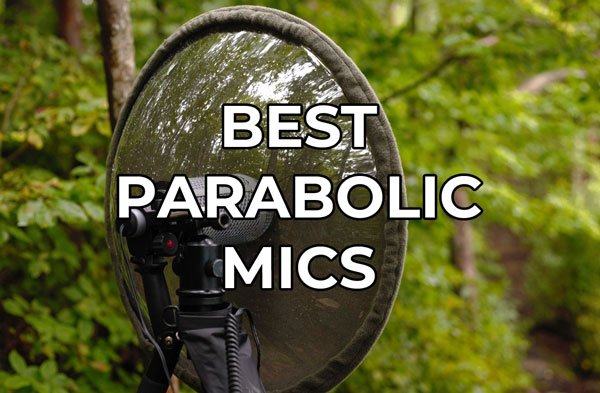Best Shotgun Mic for Location Sound (Ultimate Buyer’s Guide)
What is the best shotgun microphone on the market? Find out in this article.
Currently, there are no good resources online when it comes to shopping for a shotgun microphone. Most websites just throw a lot of options at you with no information or explanation to help you with your decision. I’m seeking to change that with this article.
This article provides an entire explanation of shotgun microphones, answers commonly asked questions, and highlights important specifications that will help you to narrow down your choice.
I have extensively researched 31 of the best shotgun microphones and recorded my findings in a comparative table.
Links on this page are affiliated with Sovrn and Amazon Associates networks.
I’m writing this article for three reasons.
To produce a high-quality resource for my fellow field recordists.
To conduct extensive research on shotgun microphones to determine the best options, and to discover any “hidden gems.”
To find the best shotgun mic for myself.
The Best Shotgun Microphones:
Best Overall: Rode NTG5
Best Budget: Rode NTG4
Best Film: Sennheiser MKH 416
Best DSLR: Rode VideoMic Pro
RELATED: Best Windscreens For Shotgun Mics
If you are new to shotgun microphones, I suggest that you start here. You will learn what a shotgun mic is, how it works, how to use one, and the specifications that will determine the best shotgun mic for your needs.
If you already know about shotgun mics, scroll down to see best shotgun microphones, or jump to the comparison table of 31 different models.
Table of Contents:
What are Shotgun Mics Used For?
Shotgun Microphone Specifications
Shotgun Microphone Comparison Table
Best Shotgun Mics for Location Sound
What is a Shotgun Microphone?
A shotgun mic is a highly directional microphone that records a concentrated “beam” of audio from only the direction it is facing.
Recording sound from only one direction is extremely helpful when there is undesirable or distracting noises present in the surrounding environment.
The microphone capsule itself is unidirectional (usually cardioid, supercardioid or hypercardioid) and is located at the bottom of a long tube. The tube gives the mic its name due to its resemblance to a shotgun barrel.
Without the tube, a shotgun microphone would preform like a normal cardioid microphone, with a heart-shaped pickup pattern (pictured below).
To learn how the tube of a shotgun mic changes the pickup pattern, please read the next section “How Does a Shotgun Mic Work?”
How Does a Shotgun Mic Work?
The key behind a shotgun microphone’s directionality is the tube. The microphone capsule sits at the bottom of a long, hollow tube with slotted holes on the sides.
The idea is that sound in front of the tube will travel, unimpeded down the tube to the capsule. This direct path maximizes the gain of your desired subject.
Sounds to the side of the barrel, however, can only reach the capsule by traveling through the slots. The same sound enters through multiple slots, which creates differences in phase inside the tube. When these different phases meet each other, they cancel out.
This phase-canceling works especially well for frequencies above 2kHz, and is increasingly less effective for frequencies below 2kHz.
What are Shotgun Mics Used For?
Shotgun microphones are most commonly used for recording dialog. They are often used for capturing speech for films, TV shows, YouTube videos, news broadcasts, speeches and conferences.
Additional uses include recording wildlife species and spot effects.
All of these uses have one thing in common: one primary focal point. Shotgun microphones are perfect for recording one subject because of their narrow pickup pattern. The subject is highlighted and the surroundings are reduced.
Common Shotgun Mic Uses:
dialog for film/video
speeches
bird song
spot effects
RELATED: Best Shock Mounts For Shotgun Mics
Shotgun Mic Specifications
In this section, you’ll learn how to read a shotgun spec sheet. In doing so, you will become an educated consumer and won’t be fooled by any marketing tricks.
You will learn about:
Self Noise
Self noise is the signal the microphone produces even when no sound source is present. This noise is produced by current running through the circuitry and sounds like white noise. All microphones produce some noise but the amount varies greatly.
The level of acceptable self noise will vary based on your application. Recording loud sounds and short distances between microphone and subject will stretch the acceptable range of microphone self noise.
Under these circumstances, your gain will be set relatively low to avoid peaking, and your subject will easily overpower the microphone’s self noise.
However, quieter sounds and recording at a distance requires more gain, which also increases the self noise level of your microphone. Noise-free recordings under these circumstances demands very low microphone self noise levels.
For easy comparison between shotgun mics, I’ve converted all self noise measurements to dB-A on the chart.
Self Noise Levels:
Poor: 24 dB-A and above. At this level, self noise is obvious and obtrusive in any recording situation short of recording jet engines at takeoff. Well, maybe that’s a slight exaggeration. Recording any sound below 70 decibels (vacuum cleaner) will have audible self noise hissing.
Fair: 20-23 dB-A. Self noise is still clearly audible at this level when recording anything below speaking volume (60dB).
Good: 16-19 dB-A. Great for most dialog and booming applications. Some noise may be heard when recording whispers, quiet ambiances and other sounds below 30-40dB.
Very Good: 11-15 dB-A. Recordists may be able to discern some slight self noise under critical conditions. Conditions include rustling leaves and other sounds below 20dB (there’s not many).
Excellent: 10 dB-A and below. Extreme low noise. Unnoticeable in any recording situation as even the quietest recording room still has more than 10dB of ambient noise.
Common sounds and their associated noise levels measured in dB-A.
Sensitivity
To put it simply, microphone sensitivity measures the amount of output for a given input. The input is the sound you are recording and the output is the actual recording.
The output of a microphone is refereed to as “the signal.”
The more sensitive a microphone is, the louder the signal will be for a given input of sound. A loud signal is ideal for low noise recordings because a lower gain can be used, keeping the noise floor low.
The best microphone sensitivity will depend on the recording application. Sometimes a lower sensitivity microphone is better, and other times, a higher sensitivity microphone is better.
Low sensitivity mics are generally better for recording isolated, loud sounds.
High sensitivity mics are generally better for recording ambient, quiet sounds.
Low sensitivity mics are good for:
close miking (lavalier, drums)
vocals in a loud environment (live music venue)
guitar and bass amps
high SPL sounds (gunshots, vehicles, etc)
High sensitivity mics are good for:
ambiences
nature sounds
parabolic microphones
voice-over work
Microphone Sensitivity Levels:
Low sensitivity: -60 dBV→-50 dBV. Best for drums, instruments, vocals (singing) and other loud signals
Medium sensitivity: -50 dBV→-40 dBV. Best for hand-held microphones, voice-over work and loud ambient environments.
High sensitivity: -40 dBV→-30 dBV. Best for boom miking, natural sounds and most ambient environments
Extremely high sensitivity: -30 dBV and below. Best for distant miking, very quiet sounds and ambient environments.
Off-Axis Rejection
Shotgun microphones are better at rejecting higher frequency sounds (above 2 kHZ) than lower frequency sounds (below 4 kHz).
Off-axis rejection is an important shotgun mic specification. It measures the microphone’s effectiveness at reducing unwanted, off-axis sounds.
For this specification, the manufacture measures the reduction (in dB) 60°, 120° and 180° from the microphone capsule. See the below image to get an idea of where these angles are in relation to the microphone.
Off-axis rejection measures the reduction of ambient noise levels at 60°, 120° and 180° from the microphone capsule.
How much reduction is good? For this article, I compiled off-axis rejection data for 30 different shotgun microphones. I added up the rejection for each of the three angles to get the total rejection figure. I then grouped the mics into three tiers of rejection based on their total rejection.
Good: 30-39 dB. Best used in environments with few distractions in the ambient environment.
booming
home video
recording studio
Very Good: 40-49 dB. Best for recording in environments with some unwanted sounds.
interviews
live reporting
noisy ambient environments
Excellent: 50+ dB. Best for eliminating distractions in loud or chaotic environments.
bird calls
crowded areas
Length
The length of your shotgun microphone will determine how portable it is, how narrow the pickup pattern is, and how effective it is at canceling-out lower frequency sounds.
Depending on your application, overall microphone length can be critical. For example, if you need a shotgun microphone to sit on top of your camera via hot shoe connection, the microphone must not enter the frame.
Additionally, travel restrictions and user preference may also determine the maximum size.
Short (<280mm): Less directional than its longer counterparts, short shotgun mics are useful when length must be minimized. They have a wider “sweet-spot” and are forgiving towards slightly-off placement.
Medium (300-400mm): Medium length shotgun mics work well in most situations offering a good balance of rejection, ease-of-use and form factor.
Long (>400mm): A long shotgun mic will have the greatest off-axis rejection. However, it is more difficult to aim and to work with because of its length. Long shotguns require precise positioning requiring either a fixed mic or skilled boom operator to keep the subject in the narrow “sweet-spot.” Long shotgun mics are the best option for recording distant sounds or loud environments.
Moisture Resistance
If you are planning on recording outdoors with your shotgun microphone, make sure you select a model resistant to moisture.
Outdoor environments are not ideal for electronics. Humidity, dust, dirt and extreme temperatures create this harsh environment. Humidity is the main problem and is notorious for killing equipment.
To solve this issue, internal wiring and circuit boards are coated with a film, called a “conformal coating,” that protects against moisture, dust and extreme hot and cold temperatures.
For each shotgun microphone recommendation, I have included whether it is moisture resistant or not in the “specifications” section.
Diameter
Diameter is an important factor to consider when selecting a mic clip, shock mount or wind protection for your shotgun microphone.
These accessories are manufactured to accept microphones of specific diameters so make sure your microphone will fit before purchasing!
Most shotgun microphones fall between 19-25mm in diameter and will fit most accessories on the market.
Shotgun Mic Comparison Table
Click a column heading to sort by that column.
*Please note: Manufacturer, Model and Price columns do not sort properly…I’m still learning Javascript and this has been a challenge for me.
| Manufacturer | Model | Price | Self-noise (dBA) | 60° (dB) | 120° (dB) | 180° (dB) | Total Rejection (dB) | Sensitivity (dBV/Pa) | Diameter (mm) | Length (mm) |
|---|---|---|---|---|---|---|---|---|---|---|
| Sennheiser | MKH 70 | $1749 | 5 | 5 | 15 | 19 | 39 | -26 | 25 | 410 |
| Sennheiser | MKH 60 | $1499 | 8 | 4 | 20 | 23 | 47 | -28 | 25 | 280 |
| Rode | NTG8 | $999 | 8 | 16 | 25 | 20 | 61 | -20 | 19 | 559 |
| Sennheiser | MKH 8070 | $1699 | 8 | 20 | 50 | 45 | 115 | -19 | 19 | 465 |
| Rode | NTG5 | $499 | 10 | 4 | 20 | 24 | 48 | -23.5 | 19 | 203 |
| Sennheiser | MKH 8060 | $1249 | 11 | 3 | 20 | 15 | 38 | -24 | 19 | 178 |
| Audio Technica | BP4073 | $699 | 13 | 5 | 15 | 15 | 35 | -29 | 21 | 233 |
| Sennheiser | MKH 416 | $999 | 13 | 3 | 20 | 15 | 38 | -32 | 19 | 250 |
| Schoeps | CMIT 5 | $2369 | 13 | 5 | 20 | 15 | 40 | -35 | 21 | 251 |
| Rode | NTG3 | $699 | 13 | 8 | 18 | 17 | 43 | -30 | 19 | 255 |
| Schoeps | Mini CMIT | $2225 | 14 | 5 | 20 | 10 | 35 | -35 | 21 | 151 |
| Rode | VideoMic Pro+ | $299 | 14 | 5 | 23 | 10 | 38 | -33.6 | 111 | 170 |
| Sennheiser | MKE 600 | $329 | 15 | 5 | 15 | 10 | 30 | -34 | 20 | 256 |
|
Shure |
VP89M | $899 | 15 | 4 | 15 | 20 | 39 | -33.5 | 22.35 | 341 |
| Shure | VP82 | $299 | 15 | 3 | 17 | 20 | 40 | -36 | 22 | 195 |
| Shure | VP89S | $699 | 15 | 4 | 25 | 15 | 44 | -33.5 | 22.35 | 237 |
| Sanken | CS-1e | $850 | 15 | 6 | 25 | 14 | 45 | -24 | 19 | 181.5 |
| Shure | VP89L | $999 | 15 | 9 | 20 | 20 | 49 | -33.5 | 22.35 | 488 |
| Sanken | CS-3e | $1450 | 15 | 13 | 26 | 28 | 67 | -28 | 19 | 270 |
| Rode | NTG4 | $229 | 16 | 5 | 24 | 18 | 47 | -36 | 22 | 225 |
| Rode | NTG4+ | $359 | 16 | 5 | 24 | 18 | 47 | -32 | 22 | 278 |
| Sony | ECM-673 | $250 | 17 | 5 | 17 | 13 | 35 | -36 | 20 | 200 |
| Sony | ECM-674 | $299 | 17 | 5 | 17 | 13 | 35 | -36 | 20 | 268 |
| Audio Technica | AT897 | $250 | 17 | 5 | 20 | 20 | 45 | -40 | 21 | 279 |
| Sony | ECM-VG1 | $299 | 18 | 3 | 15 | 20 | 38 | -33 | 20 | 210 |
| Rode | NTG1 | $250 | 18 | 14 | 16 | 12 | 42 | -36 | 22 | 219 |
| Rode | NTG2 | $269 | 18 | 14 | 16 | 12 | 42 | -36 | 22 | 280 |
| Rode | VideoMic | $149 | 20 | 4 | 16 | 12 | 32 | -38 | 98 | 248 |
| Sennheiser | MKE 400 | $199 | 21 | 4 | 23 | 12 | 39 | -42 | 62 | 130 |
| Audio Technica | 8035 | $269 | 22 | 10 | 20 | 20 | 50 | -38 | 21 | 369 |
| Shure | VP83 | $199 | 17 | 4 | 18 | 17 | 39 | -36.5 | 83 | 150 |
Best Shotgun Microphones for Location Sound
Best Overall
Rode NTG5:
The NTG5 shotgun microphone from Rode is the best overall shotgun mic because of its pro-level specifications, accessories and affordable price.
Released in December, 2019, the NTG5 is the replacement for the extremely popular NTG3 with a catch…the NTG5 has better specifications, more accessories and a lower price.
In comparison, the NTG5 is quieter, more sensitive, shorter, lighter and has better off-axis rejection than the NTG3.
Additionally, the NTG5 comes with some awesome accessories not included with the NTG3. Included is a dual lyre, Rycote shockmount, Rode PG2-R pistol grip with Pro Cable attachment for optimal XLR cable management, RM5 stand mount, foam windscreen and Rode WS10 furry windscreen!
These accessories provide everything you need to start recording high-quality audio right out of the box.
Weighing just 76g, the NTG5 is a boom operator’s dream for long days on set. Rode was able to achieve this weight by its shorter length and by machining the microphone from a solid piece of aluminum. This also adds durability to the microphone. Its seamless design eliminates weak spots along the body.
Ideal for:
booming
voice-overs
film
quiet sounds
loud environments
interviews
Specifications
Self-noise: 10 dB-A (excellent)
Total Rejection: 48 dB (very good)
Sensitivity: -23.5 dBV (extremely high)
Diameter: 19mm
Length: 203mm (short)
Weight: 76 g
Moisture Resistant: Yes
Switches: None
Best Budget
Rode NTG4:
The NTG4 from Rode offers outstanding performance and features at a discounted price. It competes with microphones costing more than double its price.
So what are you getting?
A quiet, 16 dB-A self-noise shotgun microphone with 47 dB of off-axis rejection, all wrapped up in a short, 225mm package with a diameter that will fit almost any accessory (22mm).
Its high sensitivity (-32 dBV/Pa) and low weight (126g) make it a great option for booming.
What extra features does it have?
The NTG4 has three switches on its body.
75 Hz low cut filter to reduce low-frequency noise
+6 dB treble boost for enhanced clarity and intelligibility
-10 dB pad to attenuate the input level for loud signals
Specifications:
Self-noise: 16 dB-A (good)
Total Rejection: 47 dB (very good)
Sensitivity: -32 dBV/Pa (high)
Diameter: 22mm
Length: 225mm (short)
Weight: 176 g
Moisture Resistant: No
Switches: 75 Hz low cut, +6 dB treble boost, -10 dB pad
Best for Film
Sennheiser MKH 416:
The MKH 416 from Sennheiser is the industry standard when it comes to recording dialog for film.
Developed in the 1970s, the 416 has been around for a long time and has earned a such a reputation, it is often required for landing a job as a sound guy/girl in the industry…it’s that good.
The 416 is so desired because of its sound and reliability.
Sennheiser designed the MKH 416 specifically for recording dialog on set. The adjustments to the transducer’s sensitivity in the 2,000 to 8,000Hz frequency spectrum is optimized for recording the human voice with stunning clarity and presence.
Its solid metal construction and precision machining have proven reliable for decades, even in the most inhospitable climates in the world.
Ideal for:
booming
voice-overs
film
Specifications:
Self-noise: 13 dB-A (very good)
Total Rejection: 38 dB (good)
Sensitivity: -32 dBV/Pa (high)
Diameter: 19mm
Length: 250mm (short)
Weight: 175 g
Moisture Resistant: Yes
Switches: None
Best for DSLR
If you are looking to take your video audio to the next level, a DSLR shotgun microphone is a great solution.
There are tons of options available for shotgun microphones that mount to a DSLR camera that run on batteries instead of phantom power.
Rode VideoMic NTG
The Rode VideoMic NTG is a great sound upgrade for YouTubers, vloggers and mobile journalists without breaking the bank.
This shotgun microphone features an integrated shockmount that mounts directly to your DSLR, mirrorless, or video camera and reduces noise from vibrations and camera handling.
The included windscreen reduces some wind noise, but a furry deadcat is recommended for use outdoors.
The attached 3.5mm TRS cable ensures easy hookup to your camera, and the dual-mono output means that no channel selection is necessary on your recording device.
The VideoMic NTG has a built-in Lithium-Ion battery that is rated for 30 hours of operation when fully charged.
To reduce low frequency noise from common sources such as air conditioners and traffic, the VideoMic NTG features an selectable low-cut filter switch (75 or 150 Hz).
When recording loud sounds, you can attenuate the signal by engaging the -20 dB pad.
Specifications:
Self-noise: 15 dB-A (very good)
Sensitivity: -26 dBV/Pa (extremely high)
Output: 1 x 1/8” / 3.5mm TRS
Battery: Internal 350 mAh Li-ion
Battery Life: 30 hours
Moisture Resistant: No
Switches: Gain, High-Pass Filter, HF, Pad, On/Off
Shure VP83 LensHopper
The VP83 LensHopper is the best shotgun microphone under $200 for DSLR cameras.
The VP83 offers improved performance over the Rode VideoMic in self-noise, off-axis rejection, sensitivity, battery life and fits into a smaller form factor.
It features an integrated, Rycote shockmount system to isolate the mic from vibrations and mechanical/handling noise.
The bottom of the shockmount features a camera shoe mount with 1/4"-20 thread for mounting easily to your camera or a tripod.
The housing is cast from aluminum providing a durable, rugged frame for rigorous operation in a variety of environments.
Specifications:
Self-noise: 17 dB-A (good)
Total Rejection: 39 dB (good)
Sensitivity: -36.5 dBV/Pa (high)
Output: 1 x 1/8” / 3.5mm TRS
Battery: 1 x AA
Battery Life: 130 hours
Moisture Resistant: No
Switches: 170 Hz low cut, -10 dB, flat and +20 dB gain adjustments
Rode VideoMic Pro
Offering lower noise, higher sensitivity, and more adjustable settings than the VideoMic, the Rode VideoMic Pro camera-mount shotgun microphone is ideal for mobile journalists, vloggers, budget filmmakers, and run-and-gun shooters looking for a cost-effective way to step up to the next level in quality.
The integrated Rycote shockmount system inhibits the transfer of vibrations from the camera.
The camera shoe mount has 3/8” threading in the bottom for connecting the mic to a boom pole or mic stand.
The VideoMic Pro is powered by a single 9v battery which is good for 70 hours of operation. When the battery is low, you are alerted by a red indicator light.
To reduce low frequency noise from common sources such as air conditioners and traffic, the VideoMic Pro features an 80 Hz low cut filter switch.
There are three gain controls: -10 dB for attenuating loud signals, flat for use with a dedicated preamp, and +20 dB ideal for recording directly to camera.
To hear how this microphone sounds, please see the playlist below:
Specifications:
Self-noise: 14 dB-A (very good)
Total Rejection: 30 dB (good)
Sensitivity: -32 dBV/Pa (high)
Output: 1 x 1/8” / 3.5mm TRS
Battery: 1 x 9 volt
Battery Life: 70 hours
Moisture Resistant: No
Switches: 80 Hz low cut, -10 dB, flat and +20 dB gain adjustments
Shockmounts for Shotgun Mics
Whether booming, hand-held recording, or using your shotgun microphone on a mic stand, you will need a shock mount.
The purpose of a shock mount is to eliminate unwanted noise from your recordings. Without a shock mount, your microphone is extremely susceptible to noise caused by vibrations, handling and movement.
I’ve written an entire article about shockmounts for shotgun microphones here. Below you’ll find the best overall shockmount from that article.
Best Shockmount for Shotgun Microphones
Rycote INV-7HG mkIII:
The INV-7HG mkIII is the best selling suspension system because of its performance and versatility.
The 7HG mkIII features Hytrel construction, offering the best durability and maximum shock and noise absorption available on the market.
The cradle accepts almost any microphone, with a huge range of compatibility from 19 to 34 mm in diameter.
The shock mount can be angled up or down and secures tightly in place with a heavy-duty star knob. This is essential for booming.
The solid brass, threaded base is 5/8” and a 3/8” adapter is included.
Just above the brass threading is an integrated cable management clip, also made from Hytrel.
The effective, simple, and compact design make the INV-7HG the best shock mount for boom poles and most applications.
Specifications:
Microphone Diameter: 19 to 34mm
Lyre Material: Hytrel
Cable Management: Yes
Threaded Connector: 5/8”
Adapter Included: Yes (3/8”)
Wind Protection for Shotgun Mics
While most shotgun microphones include a foam windscreen, this is only adequate protection from the slightest winds (<3mph). With this level of protection, even quick boom movements can cause unwanted wind noise.
If you’ve experienced these issues, or are planning on recording outdoors, you will need to upgrade your kit’s wind protection.
Best All-In-One Wind Protection
Rode Blimp Windshield and Shockmount:
This all-in-one solution from Rode includes a blimp, deadcat and shockmount system for protection from wind noise and isolation from shock and vibration.
The combo of the blimp enclosure and furry pull-over deadcat will protect against winds up to 20 mph (32km/h).
The blimp is designed to hold almost any shotgun microphone and can fit any model up to 320 mm in length.
The shockmount is manufactured by Rycote and is constructed from Hytrel. This thermoplastic has attributes of steel, rubber and plastic all combined to provide indestructible noise isolation for your microphone.
Best Shotgun Mic Deadcat
Rode WS6 Deluxe Wind Shield
The WS6 Deluxe Wind Shield slips directly over your shotgun microphone to protect it from high winds.
Made out of faux fur, you can expect silent recordings in up to 15-17mph winds.
The WS6 fits shotgun microphones up to 280mm in length and 19-22mm in diameter.
The rubber base prevents the WS6 from sliding off your shotgun microphone.
RELATED: Blimps For Maximum Wind Protection
Final Thoughts
I hope you have learned a lot by reading this article. My goal is always to provide quality information in an easily-understood presentation.
Was anything confusing, or would you like to learn more about a specific section? Please send me an email through my contact page and let me know!
Here are the links to all products mentioned in this article. If you decide to purchase, please use one of my links to help support me and my website. It doesn’t cost you any extra, and Amazon sends me a small percentage of the transaction fee.
Thank you for supporting my dream of becoming a full-time field recordist ♫
Support Acoustic Nature
If you enjoyed this post and would like to help support Acoustic Nature, please consider "buying me a coffee" or becoming a Patreon with the buttons below.
As a thank you for your support, Patreon supporters receive a copy of Field Recording For Beginners, exclusive access to the full Behind The Sounds video series, nature sound library downloads, and more.
If you are unable to support the site financially, please share this post with others, or leave a comment below letting me know you enjoyed this post! Both are free and help the website grow. Thank you ♫
Thanks for reading,
-Jared



